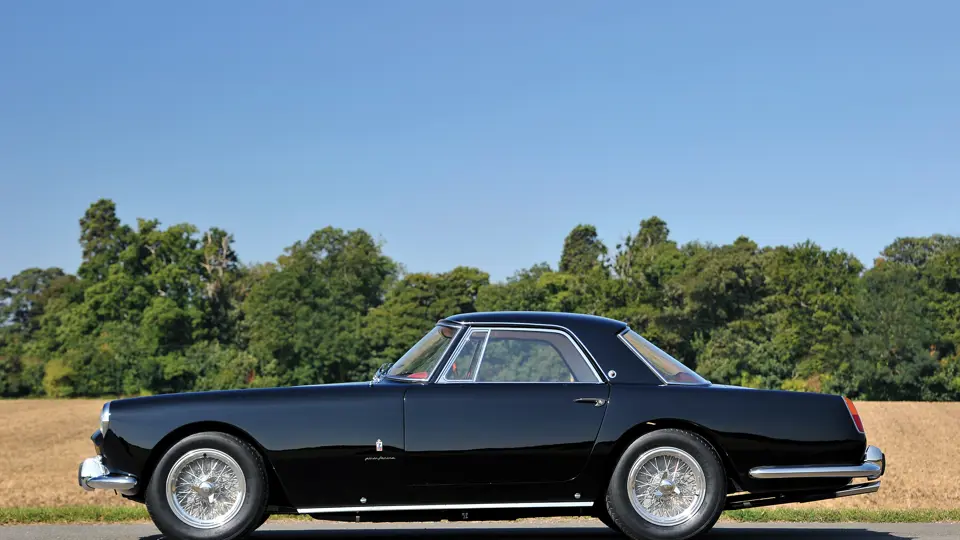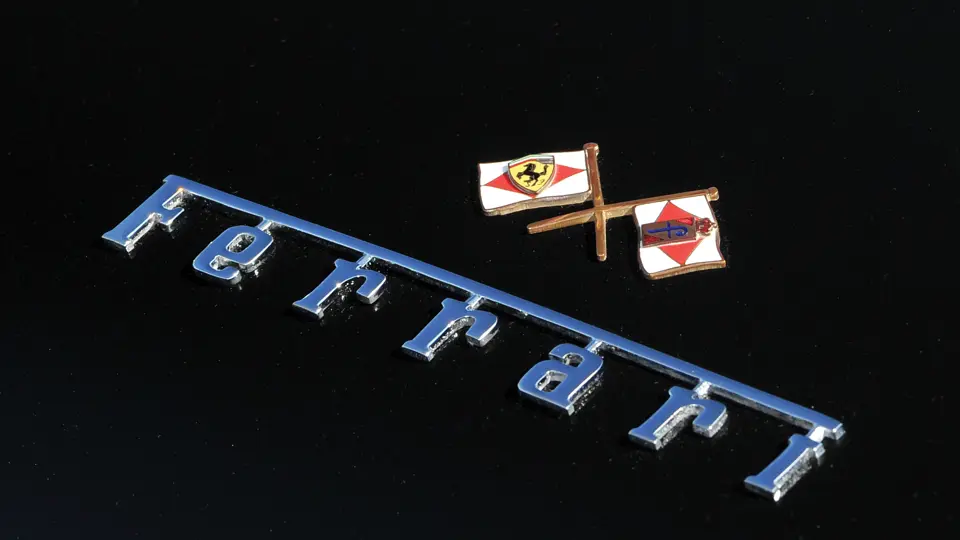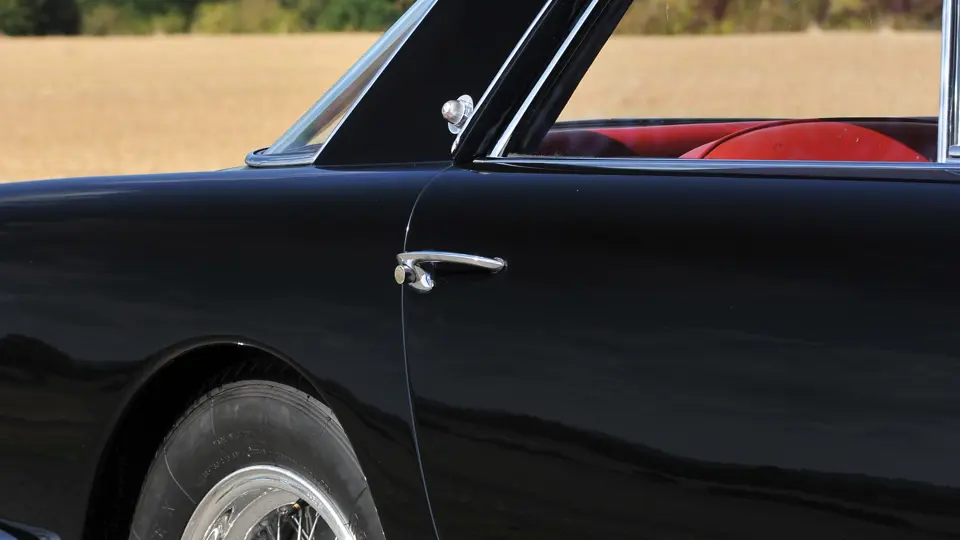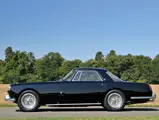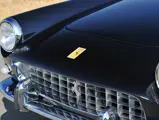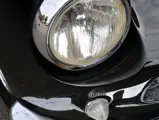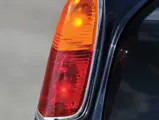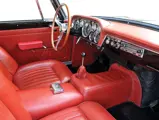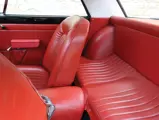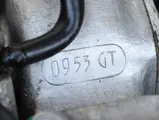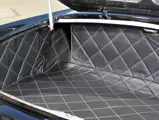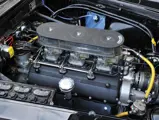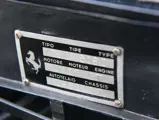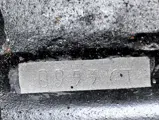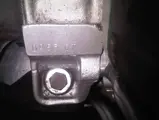
1958 Ferrari 250 GT Coupé by Pinin Farina
{{lr.item.text}}
€580,000 EUR | Sold
{{bidding.lot.reserveStatusFormatted}}
- The 11th of 353 examples built
- Desirable Type 128D “inside plug” engine
- Nut-and-bolt restoration
- Contains rare and original early production features
- Submitted for Ferrari Classiche certification
- Matching numbers
- Le onzième des 353 exemplaires produits
- Désirable moteur Type 128D « à bougies à l'intérieur du V »
- Restauration complète
- Comporte certaines caractéristiques rares et d'origine
- Soumise à la certification Ferrari Classiche
- Numéros concordants
240 bhp, 2,953 cc SOHC V-12 engine, four-speed manual gearbox, independent front suspension with unequal-length A-arms and coil springs, live rear axle with semi-elliptic leaf springs and parallel trailing arms, and four-wheel drum brakes. Wheelbase: 2,600 mm.
Moteur V-12, 2 953 cm3, 240 ch, un ACT, boîte manuelle à quatre rapports, suspension avant indépendante par triangles inégaux et ressorts hélicoïdaux, essieu arrière rigide avec ressorts semi-elliptiques et bras tirés parallèles, freins à tambours sur les quatre roues. Empattement: 2 600 mm
The new 250 GT Coupé that Ferrari introduced at the 1958 Paris Motor Show took another decisive step toward true series production for Maranello. The new coupé, replacing the Boano- and Ellena-built cars, was bodied with elegant coachwork by Pinin Farina, whose Grugliasco factory was now completed and ready for large-scale production. The coachbuilder eventually assembled 353 examples of the so-called PF Coupé, making it the most fruitful collaboration yet between two companies destined to forge one of automotive history’s most successful partnerships.
This beautifully restored 250 GT Coupé is just the 11th example built, and it boasts a number of features unique to its early build history. Cosmetically, the car wears an original nose badge that is substantially different from most others, with the Cavallino Rampante emblem mounted on a far larger than normal rectangular shield and countersunk into an unusual aperture with frenched edges. Interestingly, the same emblem distinguished the 250 Spider, chassis number 0655 GT, that Enzo Ferrari gave to Peter Collins, then his favourite grand prix driver. Little known to other than serious Ferrari historians, a handful of the first 250 GT Pinin Farina Coupés were Maranello’s initial experiment with lightweight construction via the use of fibreglass. Chassis 0953 GT is such an example, as it has a fibreglass boot lid; a handful of other early 250 GTs had both this feature and a fibreglass bonnet. It would be another 18 years before the next Ferrari, the 308 GTB Vetroresina, entered serial production using the same material.
Mechanically, the car was equipped with the first series Type 128D V-12 motor, which featured twin-distributors but with the early “inside plug” configuration. This more compact design was common to competition cars like the 250 GT Competizione Tour de France and the Testa Rossa. As such, the 128D is prized by many enthusiasts for its non-linear torque and visceral performance.
This 250 GT was completed by Pinin Farina in June 1958, and it was originally sold to Vincenzo Francesco Ferrario, of Trieste, Italy, before being returned to the factory and exported to the United States. There, the car was purchased by Charles Rezzaghi, the San Francisco-based ex-racing driver who established one of the West Coast’s first European sports car dealerships, and then it eventually found its way to Don Fenster, of Santa Ana, California. It was then sold to Paul Sackson, of Idaho, after he responded to a listing in the Los Angeles Times claiming the car “needs a valve job; $2,000 firm”. Sackson would own the car for most of the 1970s, until the Ferrari was acquired by Robert Youngdahl, of Minnesota, in 1978. This PF Coupé would hold pride of place amongst a collection of his race cars, which included a Ferrari 250 GT Boano, an Elva, and a Lola. Youngdahl retained ownership for some 34 years, until his passing in 2012. Towards the end of his ownership, the bodywork was stripped to bare metal and refinished in its current Deep Black.
The car was then purchased then by the consignor, a resident of the UK, and was imported to England, where it was treated to a rthorough restoration that properly refurbished virtually every cosmetic and mechanical element. The previous repaint in black was of such quality that it needed little beyond careful wet-sanding, and it was enhanced by a striking new interior of red leather and matching carpets, which perfectly complement the thorough mechanical work. This work included a complete rebuild of the engine, with new pistons, valves, and bearings being installed. The fuel system was completely reconditioned; the clutch and gearbox were rebuilt (with new synchros), as was the suspension; and new engine mounts and a complete new stainless steel exhaust system and manifolds were installed. The engine bay and undercarriage were meticulously refinished, and all chrome was properly re-plated. The original Borrani wheels were fully rebuilt, polished, and then fitted with new Michelin Pilote X tyres. Whilst most of the badges were either restored or replaced with proper NOS units, the rare original nose-badge, nearly a one-of-a-kind emblem, was left intact and still exhibits a charming patina.
This sensationally restored Pinin Farina Coupé, which currently displays approximately 64,000 miles, is a paragon of elegance, from its pristine paint finish to its refurbished Borrani wire wheels. However, not so elegant is the sound of 0953 GT, which roars more like a Testa Rossa than the expected gentleman’s grand tourer! This ravishing Ferrari is capable of delivering fits of torque for which the 128D engines are famed, and it exemplifies the brilliance of Maranello’s early 250 grand touring coupés. It would make a stimulating addition to even the most accomplished collection of Ferraris or other seminal grand touring automobiles of this golden era.
Le nouveau coupé 250 GT dévoilé par Ferrari au Salon de Paris 1958 constituait pour Maranello un pas supplémentaire vers la production en série. Remplaçant les voitures fabriquées dans les ateliers Ellena et Boano, ce nouveau coupé recevait une élégante carrosserie signée Pinin Farina, dont l'usine de Grugliasco était terminée et prête pour une production en série. Il en sortait 353 exemplaires de la version connue aujourd'hui sous le nom de Coupé PF, et qui répondait à la collaboration la plus étroite jusque là entre les deux entreprises, prélude à ce qui allait devenir un des partenariats les plus fructueux de l'histoire de l'automobile.
Ce coupé 250 GT magnifiquement restauré est le onzième exemplaire produit et comporte plusieurs caractéristiques spécifiques aux premières versions sorties des ateliers. Esthétiquement, la voiture porte à l'avant un badge très différent de la plupart des autres exemplaires, l'emblème du cheval cabré étant inséré dans un rectangle de beaucoup plus grande taille que d'habitude, incrusté dans un cadre à bords fraisés. Curieusement, le même emblème ornait le Spider 250 (châssis n°0655 GT) offert par Enzo Ferrari à Peter Collins, à l'époque son pilote de Grand Prix préféré. Caractéristique peu connue hormis des spécialistes Ferrari, quelques-unes de premières 250 GT Coupé Pinin Farina correspondaient aux premiers essais de Maranello d'utilisation de la fibre de verre pour alléger la carrosserie. Ce châssis 0953 GT en fait partie, et comporte une porte de coffre dans ce matériau, quelques autres 250 GT ayant en plus un capot moteur également fibre de verre. Il faudra attendre 18 ans pour qu'une autre Ferrari, la 308 GTB Vetroresina, soit produite en série en utilisant la fibre de verre.
Mécaniquement, cette voiture est équipée du moteur V-12 première série Type 128D, doté de deux distributeurs, mais dans sa première configuration comportant les bougies à l'intérieur du V. Cette version plus compacte était commune aux modèles de compétition comme les 250 GT Competizione Tour de France. En tant que tel, ce moteur est apprécié de nombreux passionnés pour sa puissance viscérale et son couple moins linéaire.
Sortie des ateliers Pinin Farina au mois de juin 1958, cette 250 GT était vendue à Vincenzo Francesco Ferrario, de Trieste, en Italie, avant de revenir à l'usine et d'être exportée aux États-Unis. Achetée par Charles Rezzaghi, ancien pilote automobile basé à San Francisco et qui avait ouvert un des premiers établissements de distribution de voitures européennes sur la Côte Ouest du pays, la voiture passait alors entre les mains de Don Fenster, de Santa Ana, Californie. Elle était ensuite vendue à Paul Sackson, dans l'Idaho, après qu'il ait répondu à une annonce du Los Angeles Times annonçant « a besoin d'un rodage de soupapes ; 2 000 $ ferme ». Sackson gardait la voiture pendant la majeure partie des années 1970, jusqu'à ce Robert Youngdahl, du Minnesota, l'achète en 1978. Elle s'intégrait alors à une collection de voitures de compétition comprenant notamment une Ferrari 250 GT Boano, une Elva et une Lola, et y restait pendant 34 ans, jusqu'au décès de Youngdahl en 2012. Peu de temps auparavant, la carrosserie avait été complètement refaite après avoir été mise à nue, et repeinte dans son actuelle teinte noire.
Achetée par son actuel propriétaire, résident en Grande-Bretagne, la voiture était ensuite importée en Angleterre et complètement restaurée, pratiquement tous les éléments cosmétiques et mécaniques étant correctement refaits. La précédente peinture noire était d'une telle qualité qu'elle ne demandait pas grand-chose d'autre qu'un lustrage soigneux, et elle était rehaussée par une nouvelle sellerie en cuir rouge avec tapis assortis, qui complétait magnifiquement les importants travaux mécaniques. Ceux-ci incluaient une reconstruction du moteur avec des pistons, soupapes et paliers neufs. Le système d'alimentation était complètement refait, de même que l'embrayage, la boîte de vitesses (avec des synchros neufs) et la suspension, le moteur recevant de nouvelles fixations et un système d'échappement en acier inoxydable. Le compartiment moteur et les soubassements étaient méticuleusement remis en état, tous les chromes étaient refaits et les jantes Borrani d'origine bénéficiaient d'une restauration et d'un lustrage complets avant d'être équipées de pneus Michelin Pilote X neufs. La plupart des badges étaient soit refaits, soit remplacés par des éléments conformes ; celui qui orne l'avant de la voiture, presque une pièce unique, était préservé et montre aujourd'hui une charmante patine.
Affichant aujourd'hui environ 64 000 miles (103 000 km), ce Coupé Pinin Farina superbement restauré est un véritable parangon d'élégance, depuis la finition de son impeccable peinture jusqu'aux jantes Borrani refaites. Pourtant, la sonorité de 0953 GT évoque plus une Testa Rossa qu'une GT de gentleman ! Offrant le couple important pour lequel est réputé le moteur 128D, cette Ferrari enchanteresse illustre l'éclat des premiers coupés grand tourisme de Maranello, et constituera un apport stimulant même à la collection la plus accomplie de Ferrari ou d'autres automobiles de grand tourisme de cet âge d'or.

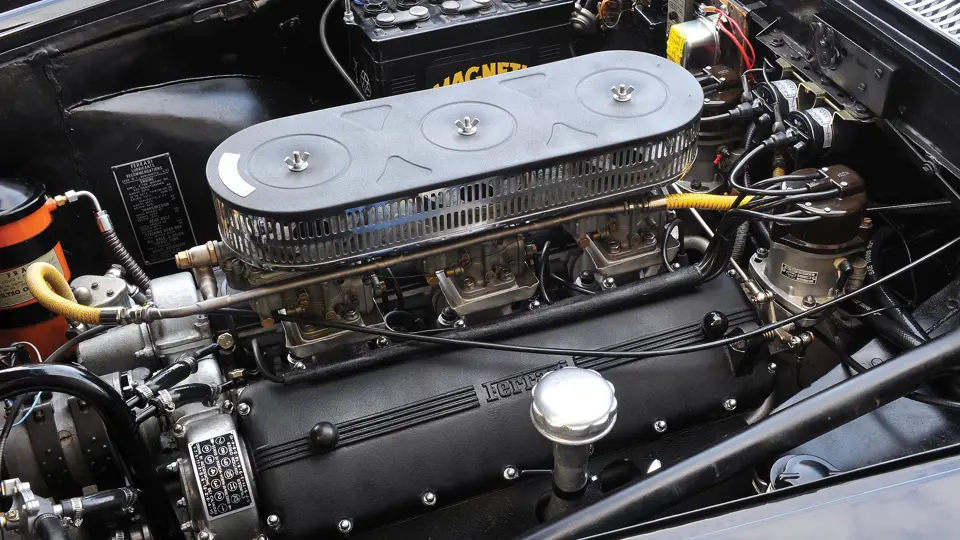


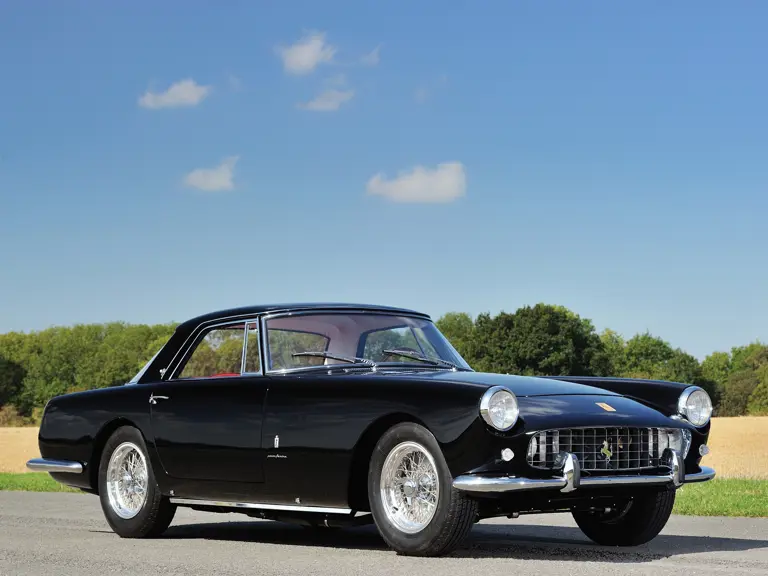


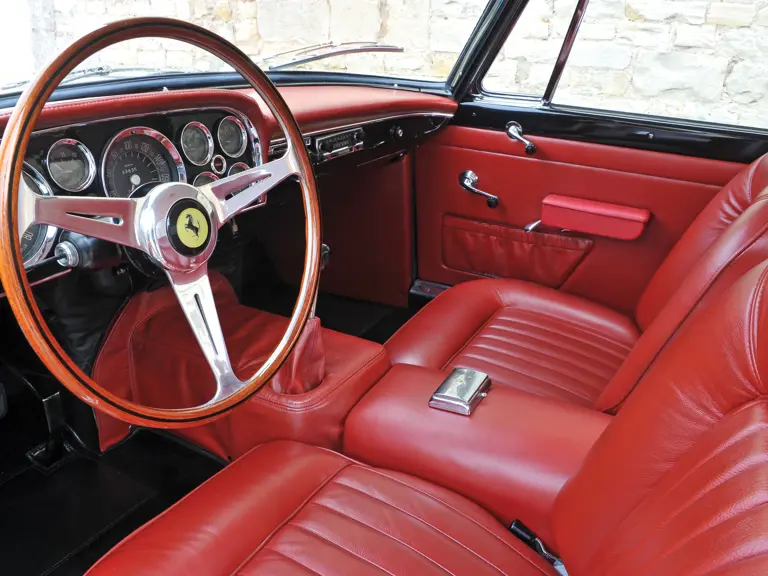
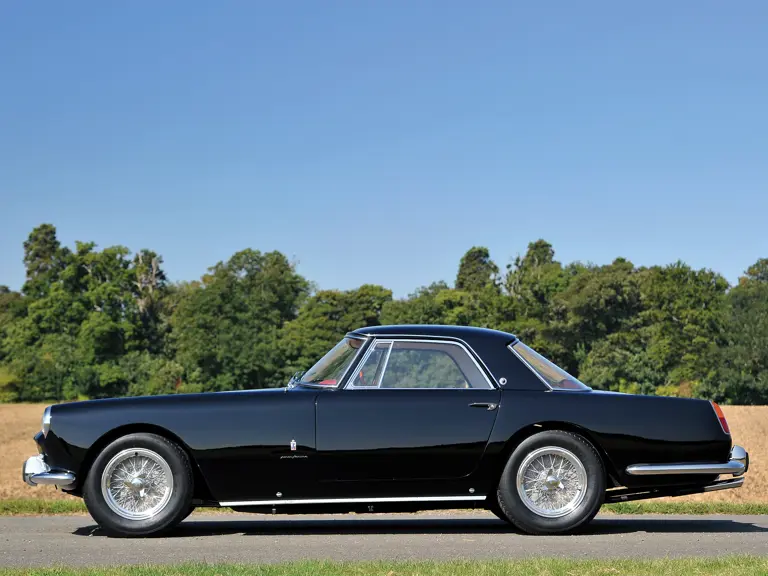
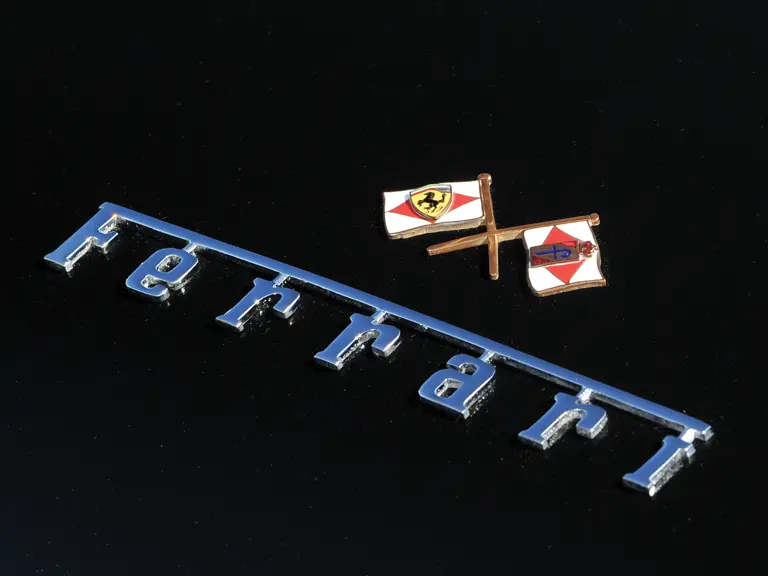
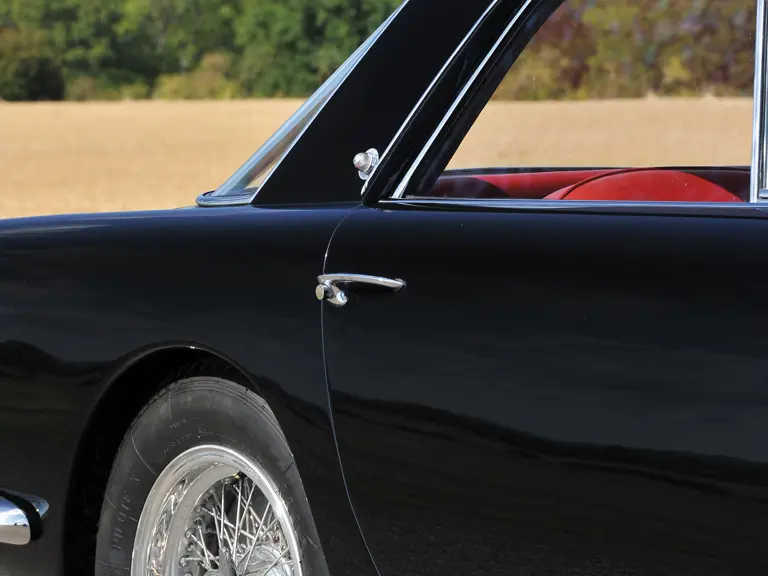
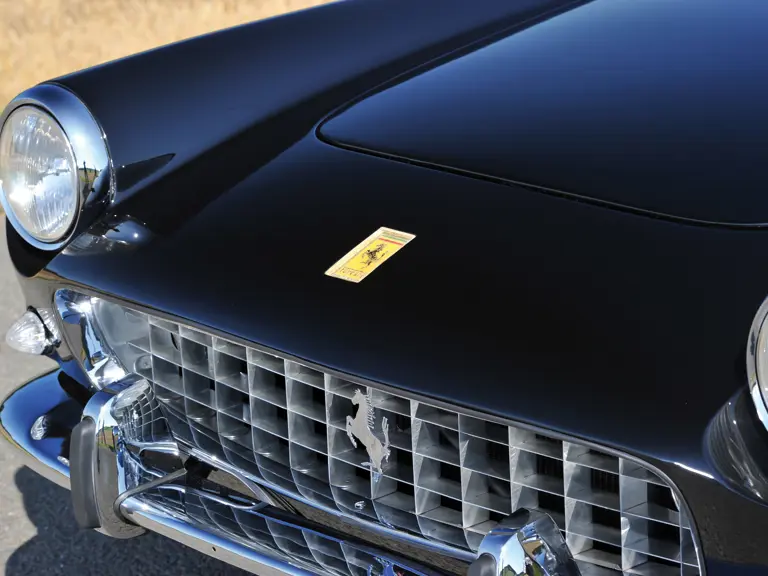


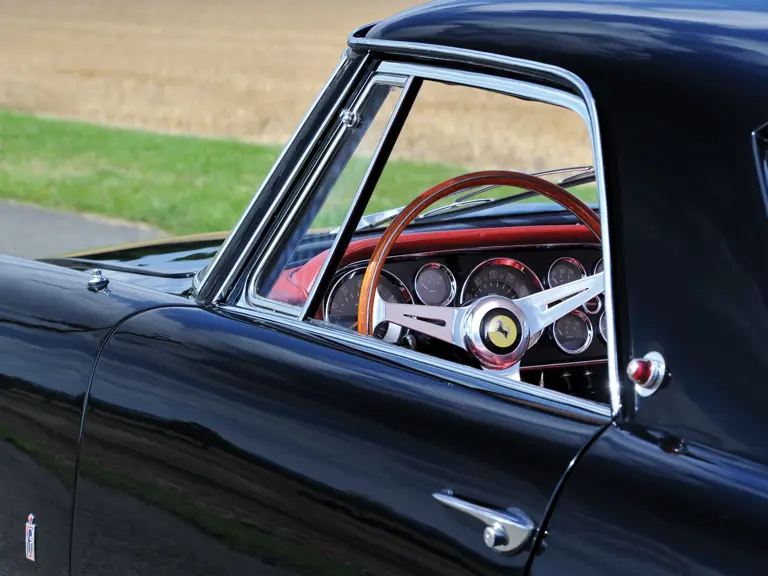
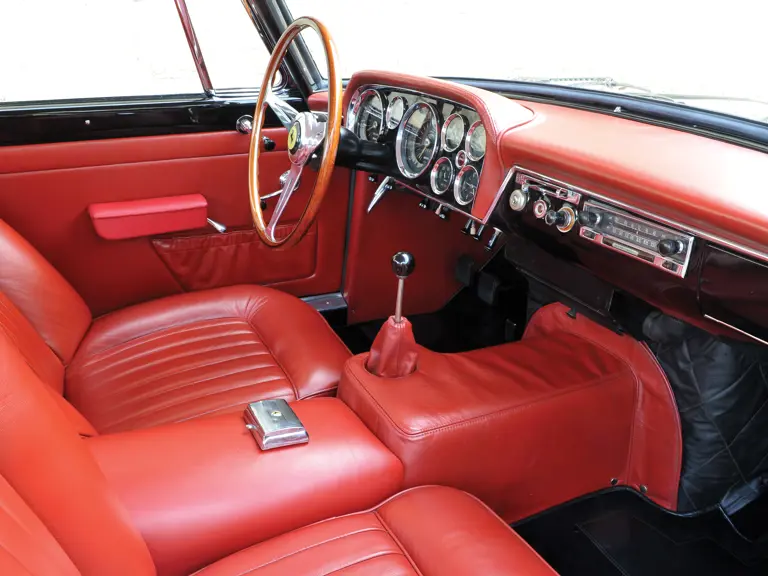
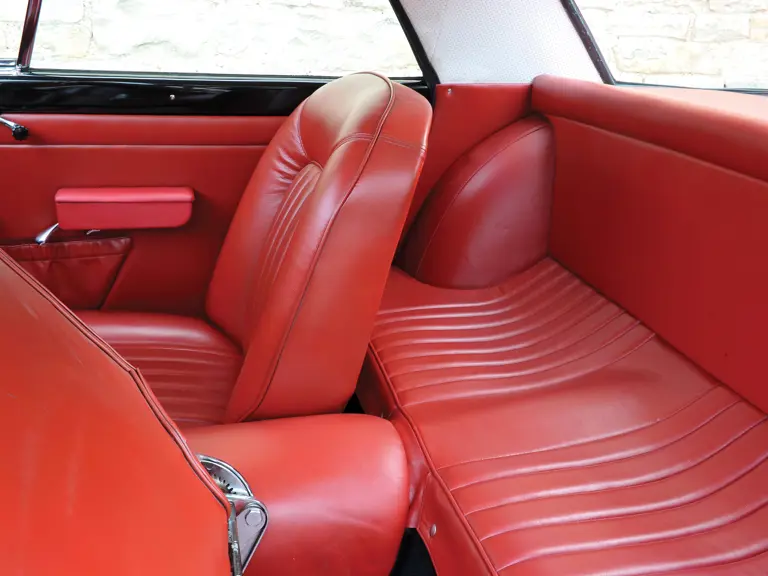
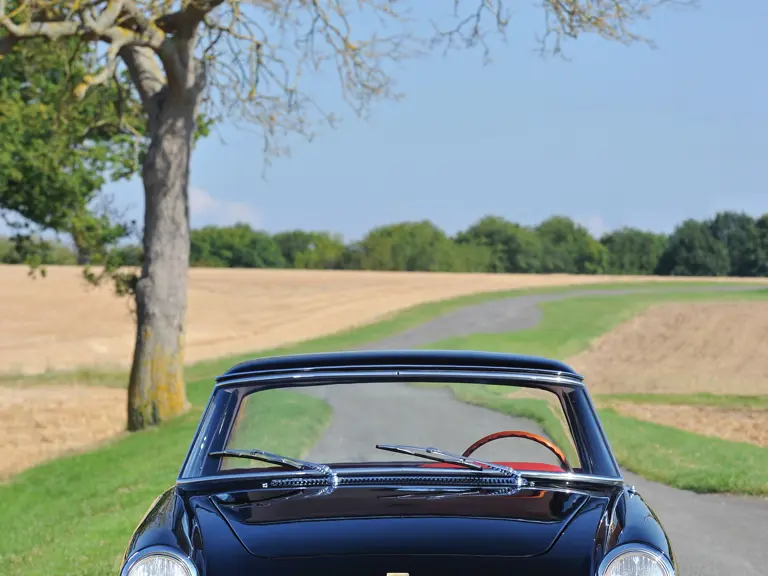
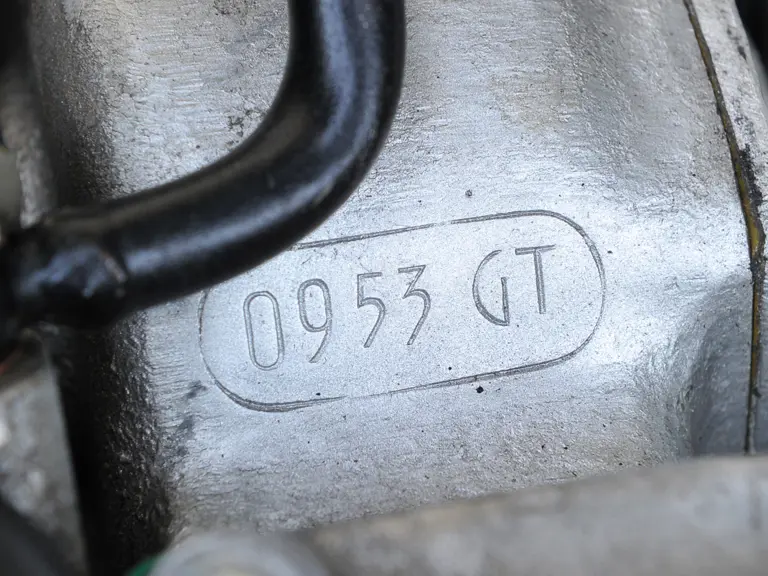

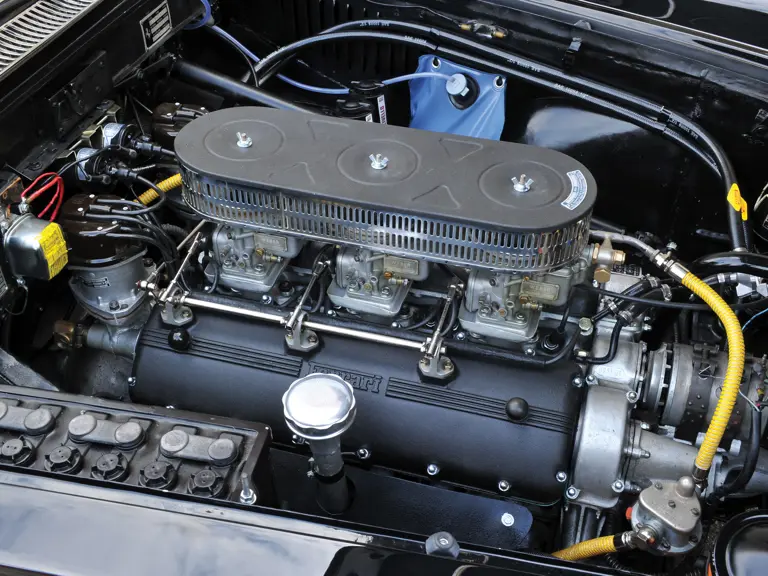
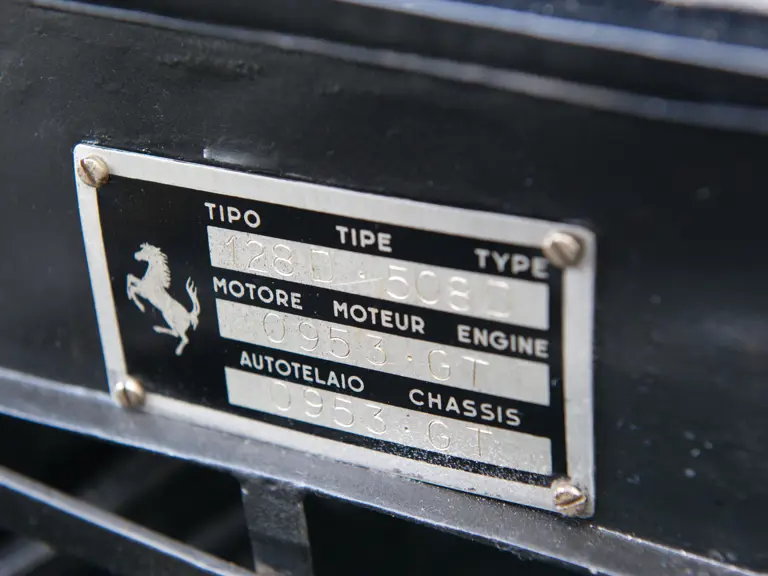
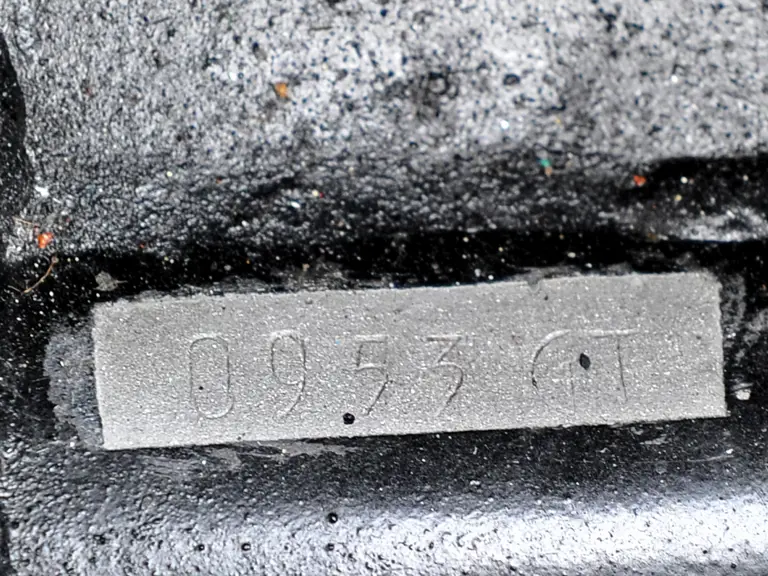
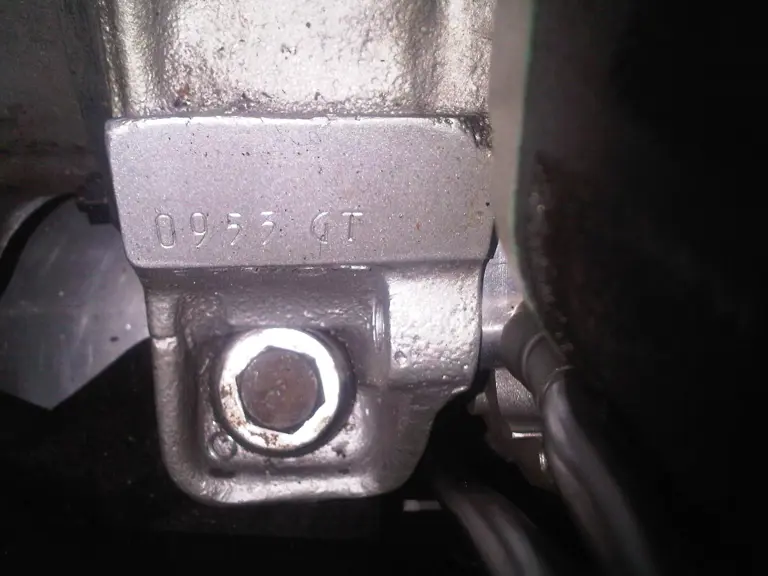
 | Paris, France
| Paris, France
